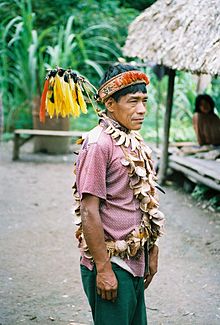
Ayahuasca is a South American psychoactive beverage, traditionally used by Indigenous cultures and folk healers in the Amazon and Orinoco basins for spiritual ceremonies, divination, and healing a variety of psychosomatic complaints.
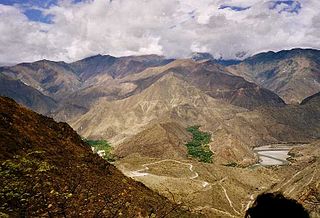
The Marañón River is the principal or mainstem source of the Amazon River, arising about 160 km to the northeast of Lima, Peru, and flowing northwest across plateaus 3,650 m high, it runs through a deeply eroded Andean valley, along the eastern base of the Cordillera of the Andes, as far as 5° 36′ southern latitude; from where it makes a great bend to the northeast, and cuts through the jungle Ande in its midcourse, until at the Pongo de Manseriche it flows into the flat Amazon basin. Although historically, the term "Marañón River" often was applied to the river all the way to the Atlantic Ocean, nowadays the Marañón River is generally thought to end at the confluence with the Ucayali River, after which most cartographers label the ensuing waterway the Amazon River.
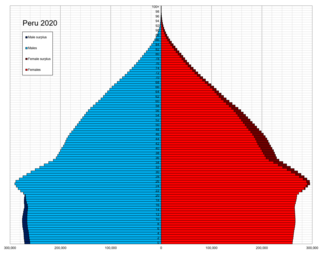
This is a demography of the population of Peru including population density, ethnicity, education level, the health of the populace, economic status, religious affiliations and other aspects of the population.

Loreto is Peru's northernmost department and region. Covering almost one-third of Peru's territory, Loreto is by far the nation's largest department, slightly larger than Japan; it is also one of the most sparsely populated regions due to its remote location in the Amazon Rainforest. Its capital is Iquitos.

The culture of South America draws on diverse cultural traditions. These include the native cultures of the peoples that inhabited the continents prior to the arrival of the Europeans; European cultures, brought mainly by the Spanish, the Portuguese and the French; African cultures, whose presence derives from a long history of New World slavery; and the United States, particularly via mass culture such as cinema and TV.

The Machiguenga are an indigenous people who live in the high jungle, or montaña, area on the eastern slopes of the Andes and in the Amazon Basin jungle regions of southeastern Peru. Their population in 2020 amounted to about 18,000. Formerly they were hunter-gatherer but today the majority are sedentary swidden cultivators. The main crops grown are manioc, maize, and bananas, but today commercial crops such as coffee and cacao are increasingly important. Their main source of protein used to be peccary and monkeys but today fish has become more important as game animals have become increasingly scarce as a consequence of the encroachment from highland immigrants to the area and the exploitation of the Camisea gas finds. The Machiguenga people have a preference for self-sufficiency when it comes to cultivating essential crops, made possible by their generous land allocation per capita, and the lack of conflict in their area.
Bride service has traditionally been portrayed in the anthropological literature as the service rendered by the bridegroom to a bride's family as a bride price or part of one. Bride service and bride wealth models frame anthropological discussions of kinship in many regions of the world.
The Chambira River is a major tributary of the Marañón River, and has been the traditional territory of the Urarina peoples for at least the past 350 years. Located in the Amazon jungle of Peru, otherwise known as the Selva, the Chambira is a tropical waterway with many purposes. There is a huge diversity of plants and animals in this region, which creates a unique ecosystem around the river. Made up of "palm-swamps", the region takes its name from the Chambira palm.
The Amahuaca or Amhuaca are indigenous peoples of the southeastern Amazon Basin in Peru and Brazil. Isolated until the 18th century, they are currently under threat from ecological devastation, disease and violence brought by oil extractors and illegal loggers. In 1998, they numbered about 520. The largest community of the Amahuaca is in Puerto Varadero, a jungle community on the Peruvian–Brazilian border.

The Bora are an Indigenous tribe of the Peruvian, Colombian, and Brazilian Amazon, located between the Napo, Putumayo and Caqueta rivers.

The Indigenous peoples of Peru or Native Peruvians comprise a large number of ethnic groups who inhabit territory in present-day Peru. Indigenous cultures developed here for thousands of years before the arrival of the Spanish in 1532.
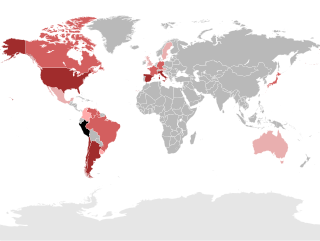
Peruvians are the citizens of Peru. What is now Peru has been inhabited for several millennia by cultures such as the Caral before the Spanish conquest in the 16th century. Peruvian population decreased from an estimated 5–9 million in the 1520s to around 600,000 in 1620 mainly because of infectious diseases carried by the Spanish. Spaniards and Africans arrived in large numbers in 1532 under colonial rule, mixing widely with each other and with Native Peruvians. During the Republic, there has been a gradual immigration of European people. Chinese and Japanese arrived in large numbers at the end of the 19th century.
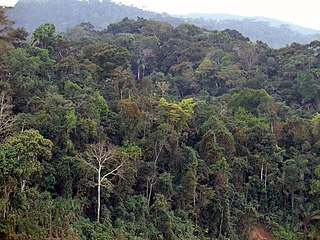
Peruvian Amazonia, informally known locally as the Peruvian jungle or just the jungle, is the area of the Amazon rainforest in Peru, east of the Andes and Peru's borders with Ecuador, Colombia, Brazil, and Bolivia. This region comprises 60% of the country and is marked by a large degree of biodiversity. Peru has the second-largest portion of the Amazon rainforest after the Brazilian Amazon.
Urarinas District is one of five districts of the province Loreto in Peru. In addition to Jivaroan-speaking peoples, a major indigenous Amazonian group residing in this District is the Urarina people.

Urarina is a language isolate spoken in Peru, specifically in the Loreto Region of Northwest Peru, by the Urarina people. There are around 3,000 speakers in Urarinas District. It uses the Latin script. It is also known as Itucali, Simacu or Shimacu.

Amazonian Kichwas are a grouping of indigenous Kichwa peoples in the Ecuadorian Amazon, with minor groups across the borders of Colombia and Peru. Amazonian Kichwas consists of different ethnic peoples, including Napo Kichwa and Canelos Kichwa. There are approximately 419 organized communities of the Amazonian Kichwas. The basic socio-political unit is the ayllu. The ayllus in turn constitute territorial clans, based on common ancestry. Unlike other subgroups, the Napo Kichwa maintain less ethnic duality of acculturated natives or Christians.
Vegetalismo is a term used to refer to a practice of mestizo shamanism in the Peruvian Amazon in which the shamans—known as vegetalistas—are said to gain their knowledge and power to cure from the vegetales, or plants of the region. Many believe to receive their knowledge from ingesting the hallucinogenic, emetic brew ayahuasca.

The Marañón River basin, at a low point in the Andes which made it an attractive location for trade between the Inca Empire and the Amazon basin, once harbored numerous languages which have been poorly attested or not attested at all. Those of the middle reaches of the river, above the Amazon basin, were replaced in historical times by Aguaruna, a Jivaroan language from the Amazon which is still spoken there. The languages further upriver are difficult to identify, due to lack of data. The region was multilingual at the time of the Conquest, and the people largely switched to Spanish rather than to Quechua, though Quechua also expanded during Colonial times.
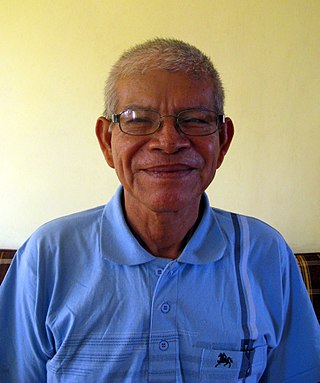
Guillermo Arévalo Valera is a Shipibo vegetalista and businessperson from the Maynas Province of Peru. His Shipibo name is Kestenbetsa.
Joanna Overing is an American anthropologist based in Scotland. She has conducted research on egalitarianism, indigenous cosmology, philosophical anthropology, aesthetics, the ludic and linguistics through fieldwork in Amazonia. She has extensively studied indigenous Piaroa people in the Orinoco basin of Venezuela.
